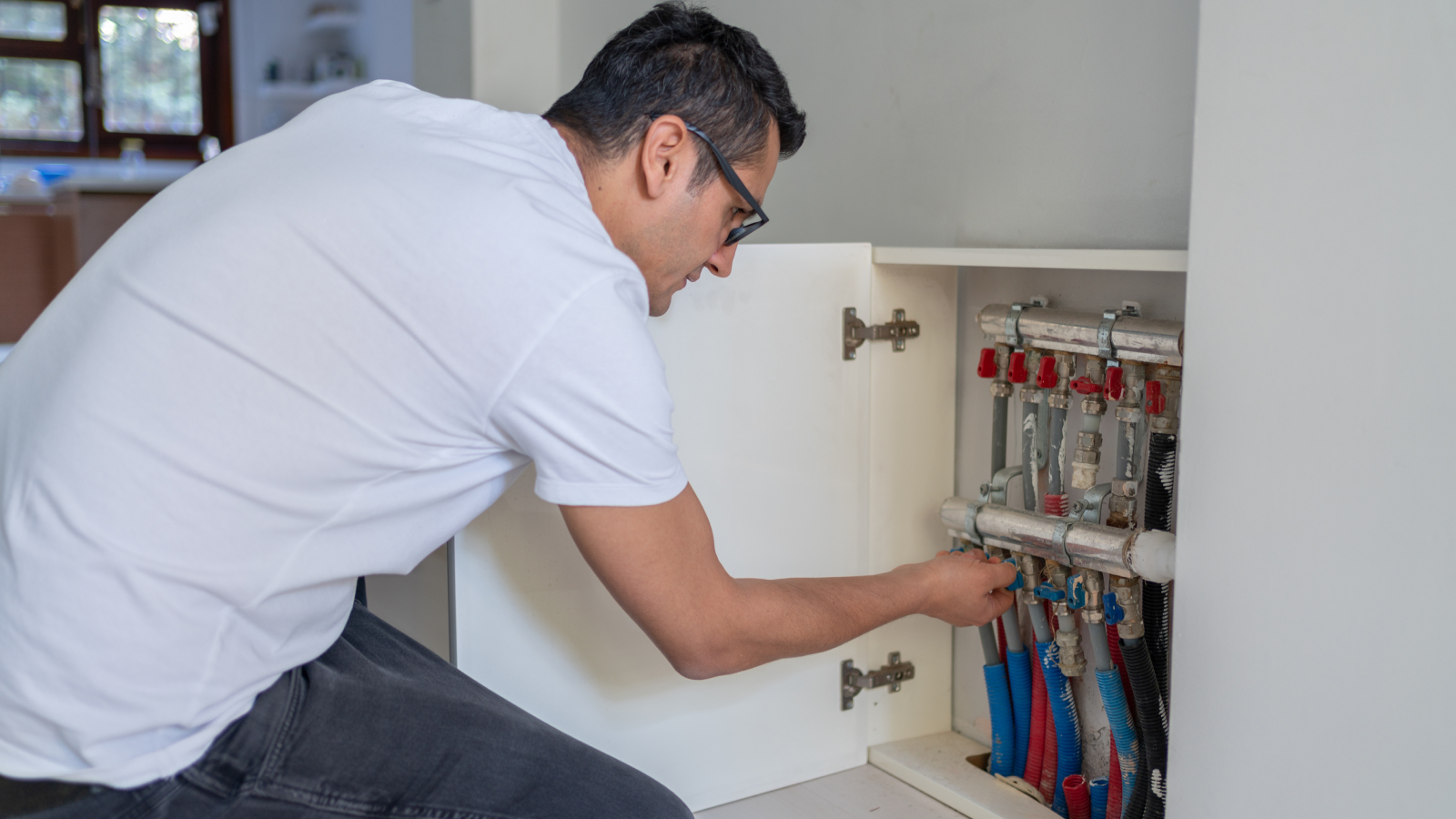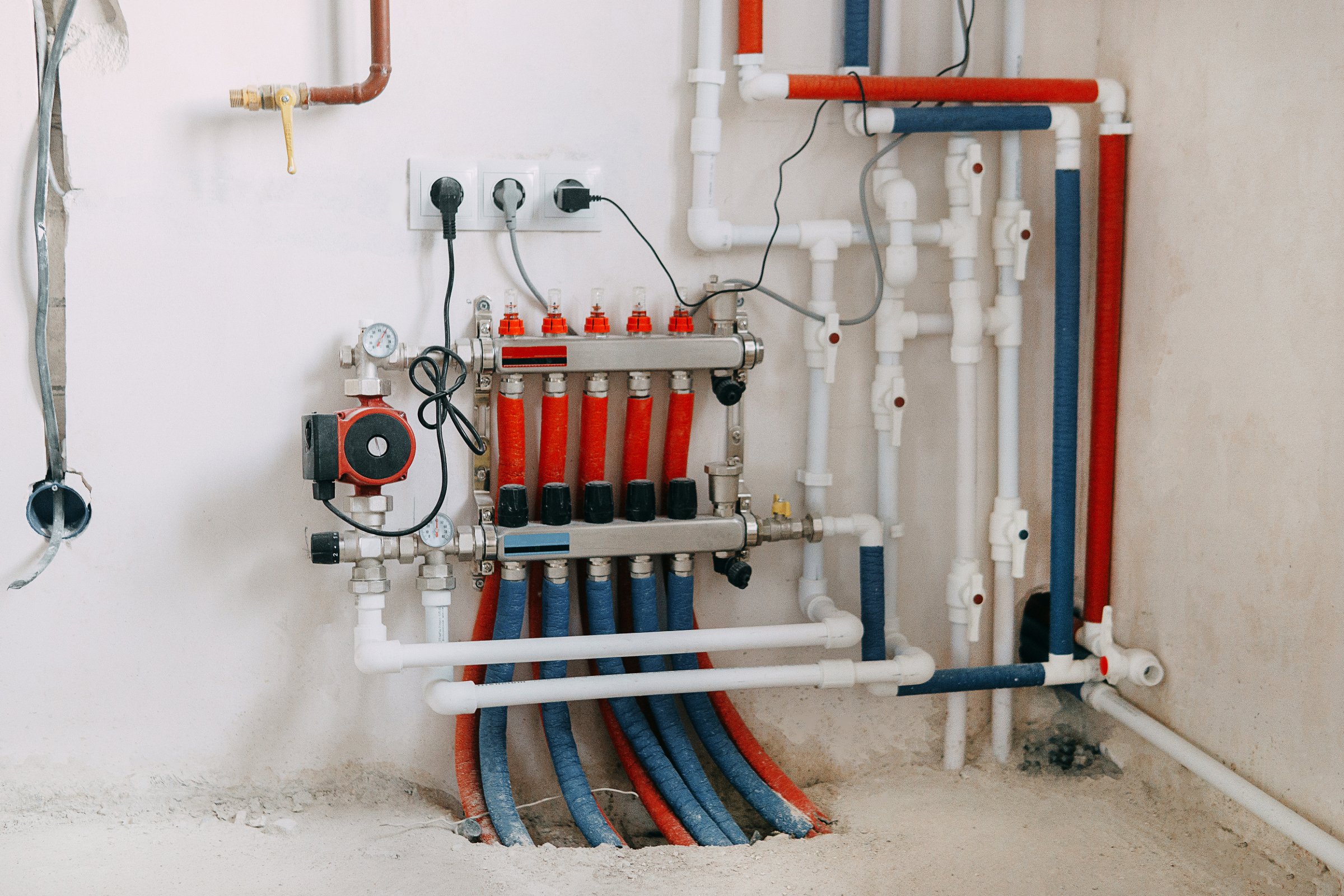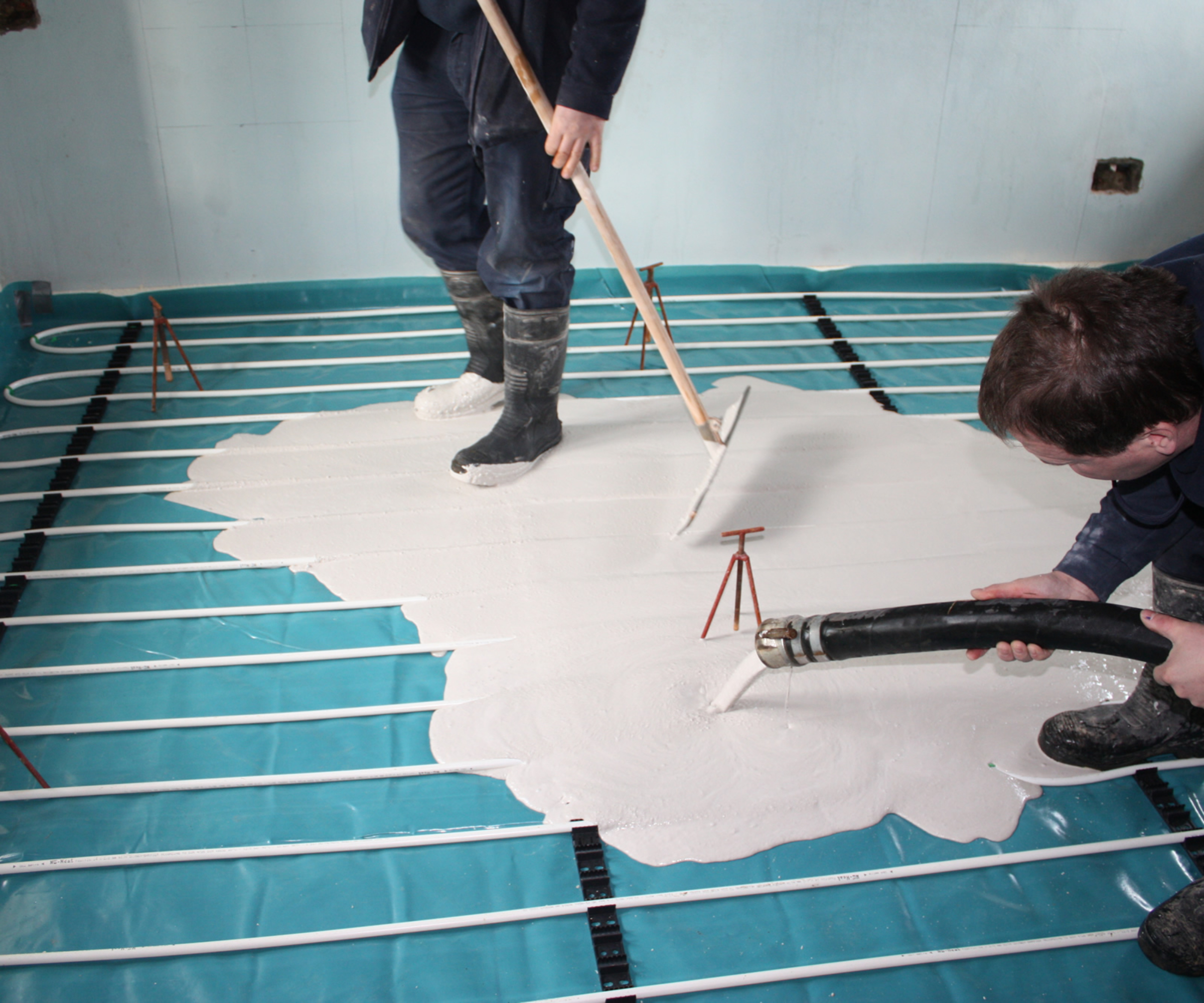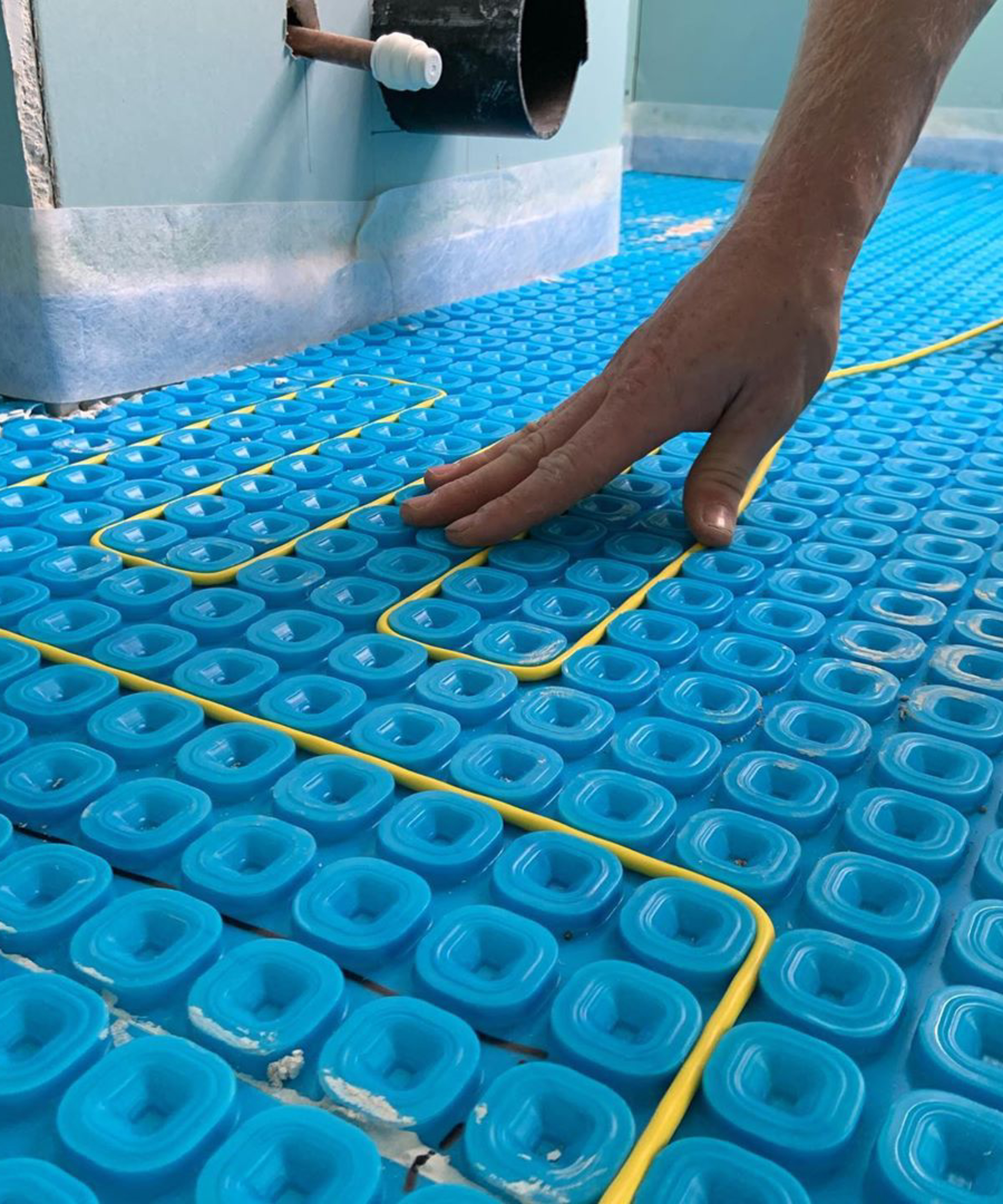Underfloor heating maintenance is pretty easy, but these are the vital checks you can do yourself to keep it in tip-top condition
Although an annual service should identify any problems, the underfloor heating maintenance you do yourself will help keep your system working well

While bleeding radiators and boiler services are common maintenance tasks for a central heating system, what's involved in underfloor heating maintenance?
Less visible than radiators, underfloor heating generally only has a few visible elements – mainly the manifolds, pipes leading to the manifold and thermostats. So how can you regularly check your underfloor heating is both safe and working as it should?
Heating expert, David Hilton explains the jobs you need to add to your underfloor heating maintenance list and the warning signs to keep an eye out for that might suggest you need to call in the experts.
Wet underfloor heating maintenance
Wet underfloor heating systems have a number of different ways that they can be installed, but essentially the maintenance requirement for all wet systems is very similar.
Flow is key to the performance levels of your wet underfloor heating, and as such, any restrictions to the flow will result in poor performance. Therefore, a standard underfloor heating annual service is recommended as part of your underfloor heating maintenance plan.
This will include a service engineer looking at all of the filters, checking that none of the safety valves are weeping, and also that the inhibitors and antifreeze additives are all still fit for purpose. If they have thickened in the system, this will mean the pump has to work a lot harder and flow will be impacted.
As the underfloor heating manifold is the part of the wet underfloor heating system that distributes the heat to the various zones, it also has the most moving and working parts on it.
Bring your dream home to life with expert advice, how to guides and design inspiration. Sign up for our newsletter and get two free tickets to a Homebuilding & Renovating Show near you.
If you have the knowledge and skills, you can check that all the actuators (zone valves) are working in order to check they all still open and close on demand, and also that the balance of the system is still right, ensuring the right amount of heat goes to the correct areas. If not, this should again be covered by an annual service.

DIY underfloor heating maintenance
But with some of the more complicated checks needing the skills of a qualified expert, what can you do at home to ensure your underfloor maintenance prevents big problems from developing?
Making sure you know how to bleed underfloor heating will help keep your system in good working order. In addition, some simple underfloor heating maintenance checks you can regularly undertake yourself include:
- Checking for airlocks (often identified by strange noises)
- Feeling the floor for cold spots
- Making sure the pressure gauge is at the right setting
- Cleaning vents and manifolds
- Running the system occasionally throughout the summer to prevent pumps sticking
- Testing the thermostats
Pipework maintenance
As the main pipework for wet underfloor heating systems is buried in the fabric of the building, namely the floor, it is not feasible to physically check it all. However, there are still steps you can take as part of your underfloor heating maintenance.
A visual check for signs of leaks or corrosion on the flow and return pipes leading to the mainfold is essential, and any pipework that has insulation on it will also need to be visually inspected for any signs that the insulation is coming away from the pipes, as well as any signs of water residue around the joins of the insulation.
However, any water marks at the joins does not necessarily mean that there is a leak at that exact point, as water could have travelled quite a long way along the inside of the insulation and only come out at a gap.
Signs of water leaks, especially if they are still wet, will need you to remove the insulation and find the source, and the reason for the leak. This will then need to be repaired by a competent plumber or heating engineer.

Dealing with leaks or wet patches
Unlike electrical underfloor heating systems, if there is a mechanical break in a wet system then there will be signs of water leaks – although most leaks in underfloor heating systems happen during underfloor heating installation, or when building works happen in the home and the system is accidentally damaged.
In the unlikely event that you notice a wet patch in the floor then an inspection with a thermal imaging camera will be required to be sure that the cause of the issue can be located.
To repair it, a part of the floor will need to be removed to expose the pipes. In a suspended floor this will be slightly less tricky than a screeded floor, but any water damage may be greater. Any damage discovered to the underfloor heating pipes will need to be repaired and pressure tested before the area can also be repaired and made good again.
Electric underfloor heating maintenance
Electrical underfloor heating systems need very little maintenance and will need to be inspected by an appropriately qualified and experienced electrician. Therefore, the best maintenance you can undertake is to be vigilant in monitoring how it is operating, and being aware of any signs, or smells, of burning from the wiring.
If you notice any obvious issues or if the system suddenly stops working then call in an expert. Also make sure you know where the isolation switch is so that you can safely cut the power to it until they get there.

Additional checks
Last, but not least, you need to be sure that you are running the system correctly by avoiding the most common underfloor heating mistakes.
Many modern heating systems may now have heat pumps connected and as such the underfloor heating should have been designed, installed and commissioned for low temperatures, and should also ideally not be set up with zones (or times of the day) that turn the system completely off.
During any annual heating service, it is essential to let the service engineer know if you have had any issues with the heating system during the year so that these can be rectified during the service.
Once the system is set up, leave it alone. It might be nice to be able to tamper with control apps on your phone, but make sure you know what you are doing before you start making too many changes.
Knowledge of how your underfloor heating operates and should be operated will also ensure you don't start calling out engineers for problems that don't exist or need any maintenance.
Find out how long does underfloor heating take to warm up, so you don't confuse normal delays with cold spots, and also establish what temperature should underfloor heating be set at so you don't make unnecessary demands on your home heating.
David is a renewables and ventilation installer, with over 35 years experience, and is a long-standing contributor to Homebuilding and Renovating magazine. He is a member of the Gas Safe Register, has a Masters degree in Sustainable Architecture, and is an authority in sustainable building and energy efficiency, with extensive knowledge in building fabrics, heat recovery ventilation, renewables, and also conventional heating systems. He is also a speaker at the Homebuilding & Renovating Show.
Passionate about healthy, efficient homes, he is director of Heat and Energy Ltd. He works with architects, builders, self builders and renovators, and designs and project manages the installation of ventilation and heating systems to achieve the most energy efficient and cost effective outcome for every home.

